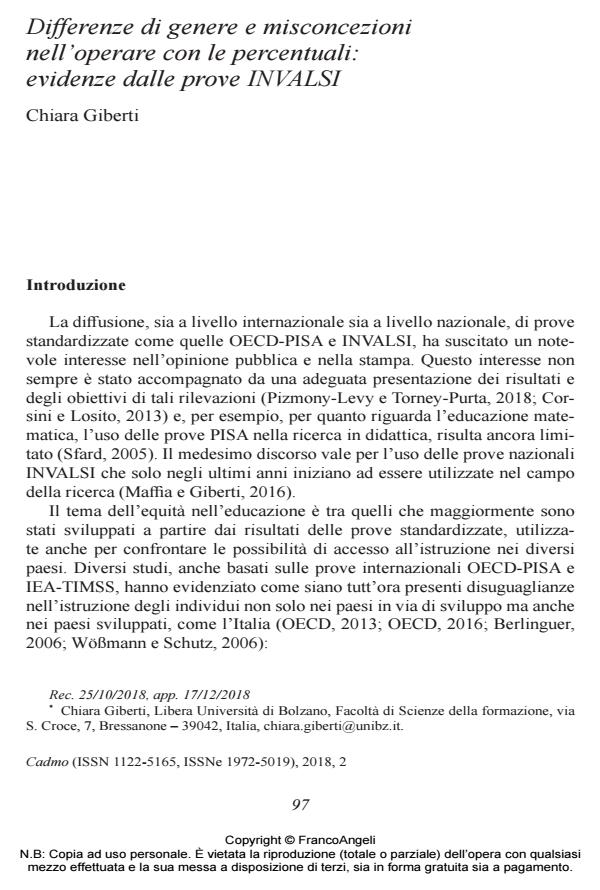Differenze di genere e misconcezioni nell’operare con le percentuali: evidenze dalle prove INVALSI
Titolo Rivista CADMO
Autori/Curatori Chiara Giberti
Anno di pubblicazione 2019 Fascicolo 2018/2
Lingua Italiano Numero pagine 18 P. 97-114 Dimensione file 416 KB
DOI 10.3280/CAD2018-002007
Il DOI è il codice a barre della proprietà intellettuale: per saperne di più
clicca qui
Qui sotto puoi vedere in anteprima la prima pagina di questo articolo.
Se questo articolo ti interessa, lo puoi acquistare (e scaricare in formato pdf) seguendo le facili indicazioni per acquistare il download credit. Acquista Download Credits per scaricare questo Articolo in formato PDF

FrancoAngeli è membro della Publishers International Linking Association, Inc (PILA)associazione indipendente e non profit per facilitare (attraverso i servizi tecnologici implementati da CrossRef.org) l’accesso degli studiosi ai contenuti digitali nelle pubblicazioni professionali e scientifiche
International standardized assessments highlight the existence of gender differences in mathematics performances: male outperform female in many countries and in Italy this gap is remarkable. The results of Italian standardized assessment, called INVALSI test, confirm the existence and the importance of this gap. In this paper we examine three INVALSI items for Grade 10, similar in terms of mathematical content, item type and question intent. The quantitative analysis of each item, based on the Rasch Model, shows that male and female answers have distinctly different response behaviors, and these differences are similar in the three items. A pedagogical interpretation of the quantitative results led us to explain this gap in terms of a different influence of a specific misconception on males and females.
Parole chiave:Gender gap; misconceptions; percentages; Rasch analysis; standardized assessment.
- The Properties of Powers: Didactic Contract and Gender Gap Federica Ferretti, Chiara Giberti, in International Journal of Science and Mathematics Education /2021 pp.1717
DOI: 10.1007/s10763-020-10130-5 - Changing the Order of Factors Does Not Change the Product but Does Affect Students’ Answers, Especially Girls’ Answers Clelia Cascella, Chiara Giberti, Giorgio Bolondi, in Education Sciences /2021 pp.201
DOI: 10.3390/educsci11050201 - The role of metaphors in interpreting students’ difficulties in operating with percentages: A mixed method study based on large scale assessment Chiara Giberti, George Santi, Camilla Spagnolo, in European Journal of Science and Mathematics Education /2023 pp.297
DOI: 10.30935/scimath/12642
Chiara Giberti, Differenze di genere e misconcezioni nell’operare con le percentuali: evidenze dalle prove INVALSI in "CADMO" 2/2018, pp 97-114, DOI: 10.3280/CAD2018-002007